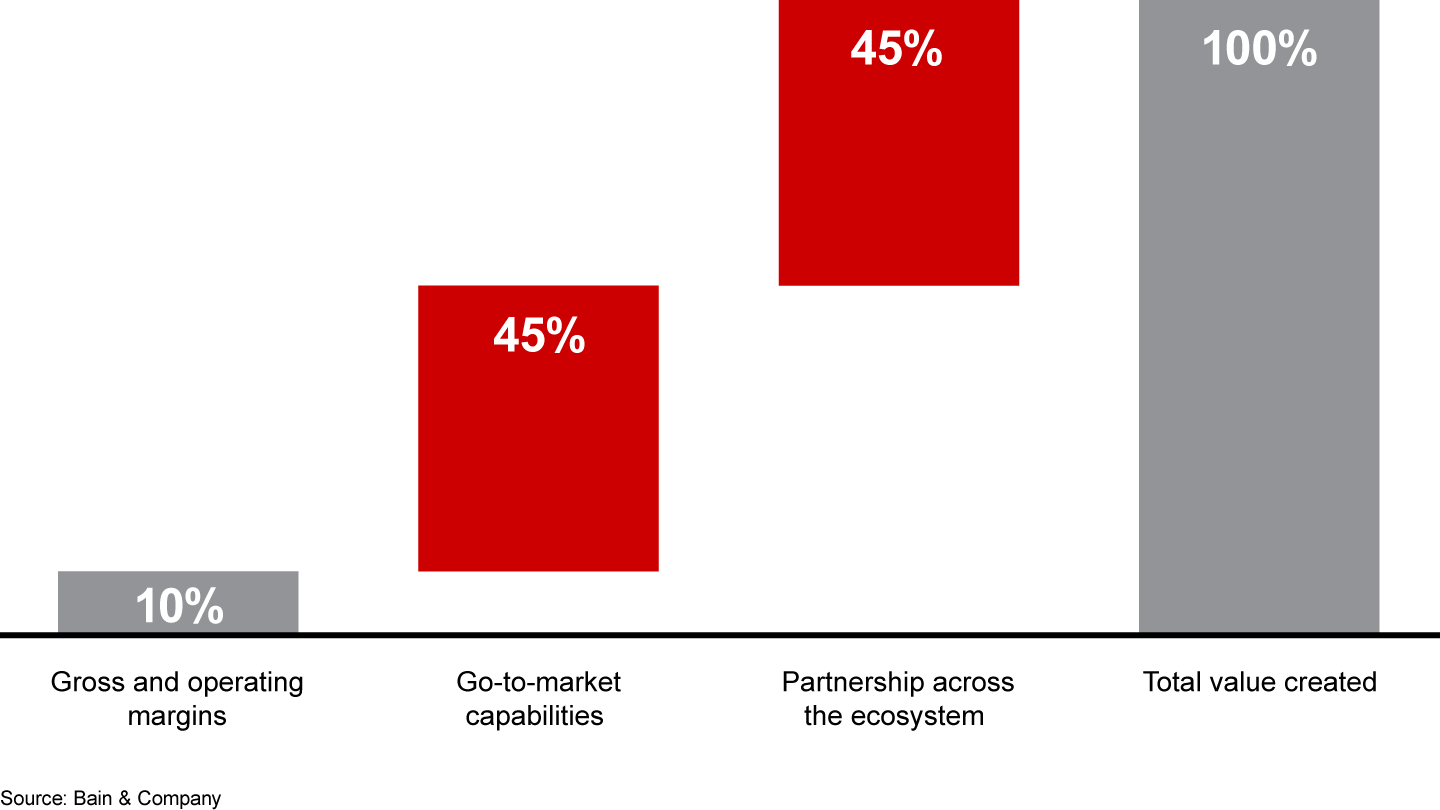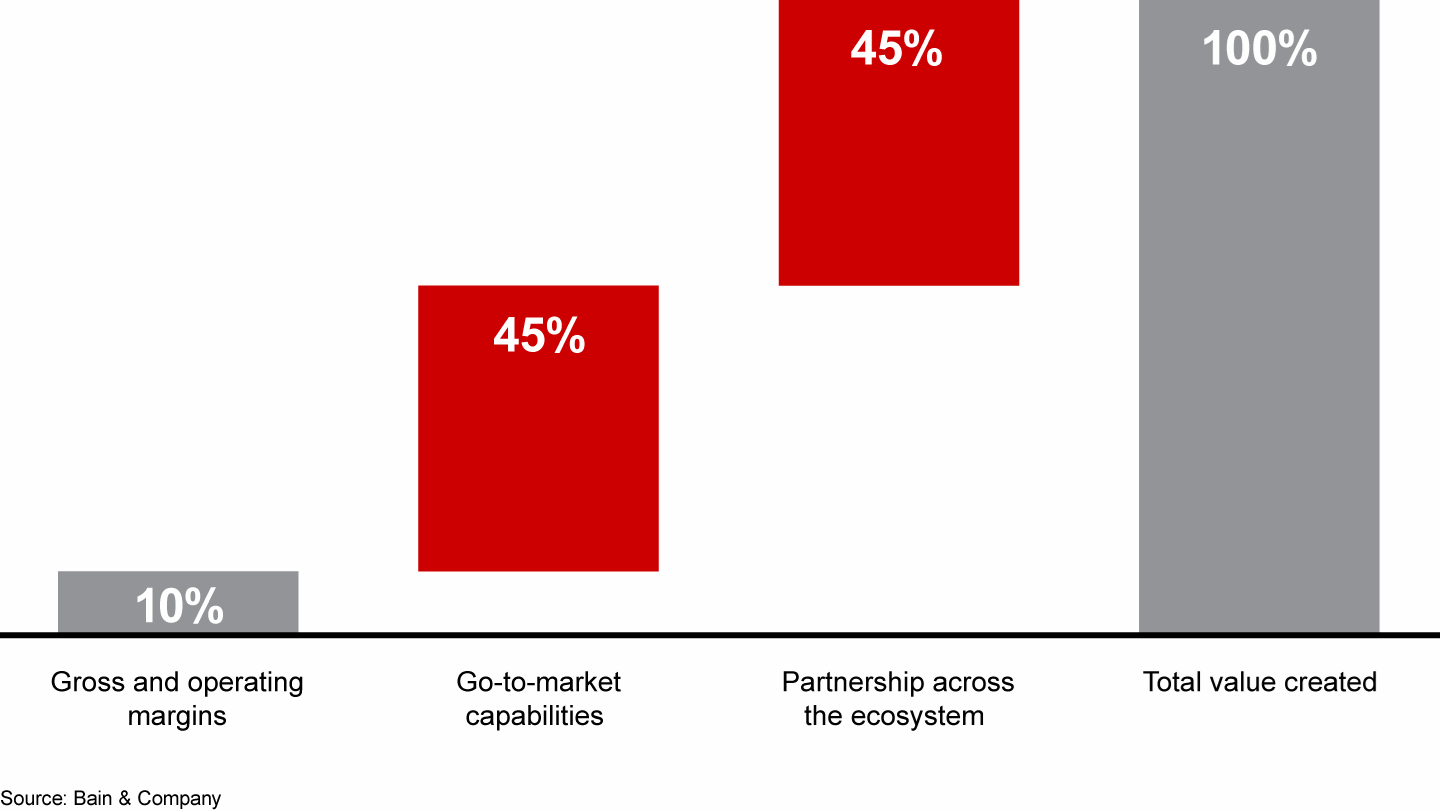Founder's Mentality Blog

As we’ve worked with companies on micro-battles, we’ve recognized a common pattern: Most large firms have lost the art of business building. What do we mean by business building? Business building is the act of taking an innovative new product or service and determining a go-to-market strategy and ecosystem position that will create a sustainable competitive advantage. The overall health of that ecosystem, or the ability for all industry players to make money, is a critical factor.
The drift away from business building has been a long-standing issue for incumbents. Yet many multinational companies only recently realized that they had a problem. When these CEOs started to prioritize China in their growth strategies, they discovered that it’s like a secondary domestic market—a huge place to play with huge local players. China is full of nimble scale insurgents, or firms that compete on the basis of both scale and speed. They are large, fast and disruptive. In order to win in China, CEOs needed more than an extension of their existing business model; they needed a new business. But they found out that their organizations weren’t very good at building them.
Your China problem isn’t just about China; it is a proxy for your lost art. As the nature of strategy continues to evolve, it is increasingly about building new businesses rather than running existing businesses. In order to compete with the fast and fearless firms of the future, companies will need to rediscover the importance of business building and launch efforts to institutionalize this critical skill. CEOs can engage the organization in these efforts by taking four courses of action.
No. 1: Develop a robust scaling community
The most effective business builders recognize and nurture three communities. To innovate, you rely on your Agile/disruptive/innovator community. The members of this community focus on disrupting your current company. They are your key to creating a new business model. To deliver innovation to customers through the right route to market, you need your expert/execution community. They execute flawlessly through daily routines. The scaling community is the critical link between these two groups. Scalers translate disruptive ideas into something that can exist in the world of routines. Establishing a robust scaling community is a crucial first step in relearning how to build businesses. Without scalers, your innovations are likely to stall or remain regionally confined, deprived of scale benefits. In our profiling work with The Chemistry Group, a London-based research firm that helps organizations get the most out of their people, we found that scalers are built, not born. Companies can build their scaling communities by presenting the right opportunities for members to learn and grow. Micro-battles are one way to create these experiences.
No. 2: Launch micro-battles
These fast-moving, cross-functional initiatives provide a structured way to flex your business-building muscles and grow your scaling community. Micro-battles require organizations to hone three necessary skills.
- Scaling: In micro-battles, teams translate bold strategic initiatives into prototypes that customers can assess. They also learn how to scale a winning prototype into a business that creates a competitive advantage. Ultimately, by running micro-battles, teams learn how to scale ideas. They help their organization think beyond innovation. They not only think about what the new product or service is but also how to build a business that delivers the product or service across multiple markets.
- Learning: Companies that engage in micro-battles also rediscover the experience curve in their businesses by reintroducing a learning agenda. Several authors have focused on business learning recently—most notably, Cal Newport, with his notion of “deep work”; Matthew Syed, with his notion of “purposeful practice”; and Malcolm Gladwell, with his notion of “10,000 hours.” Through micro-battles, we want companies to learn by focusing their best people on deep work, those cognitively demanding tasks that contribute to the organization’s insurgent mission. Micro-battle teams can develop skills (particularly scaling) through experience, or purposeful practice. Senior leaders can dedicate at least 10,000 hours to master business building.
- Leading: Senior leaders must also learn how to amplify the impact of each individual micro-battle. Our micro-battles approach incorporates a founder’s mindset—that is, the desire to constantly improve and grow an idea with each round of test and learn. Through micro-battles, senior leaders gradually shift their behaviors. They refrain from shutting down ideas and adopt the more insurgent attitudes of business builders.
No. 3: Build Engine 2
The goal of micro-battles is to pursue the foundational building blocks of a scale insurgent. Large incumbent companies that have lost their sense of insurgency can focus on building what we call Engine 2. Engine 1 is your core business and your primary source of cash. It’s often a mature business. Profitable growth depends on everyone working hard to sweat the assets, pulling every benefit of scale. Engine 2 is your newer growth businesses. It has great potential, but it won’t generate cash for years to come. It is an ideal platform for rediscovering business building.
This isn’t to say that innovation doesn’t matter in Engine 1. In fact, you can’t be a leader in Engine 1 without constant renewal. You’re always innovating with new products and services. But you’re offering them through an existing business, in which you understand how to go to market and know your role in the ecosystem. As a result, all of your financial models around innovation bank on gross margin or operating margin economics. Your teams must predict the price of the product and compare it with the cost of goods sold (gross margin). They must sort out selling costs (operating margin), forecast forward and discount back to determine a positive or negative net present value for the investment. The Engine 1 team must engage in endless iterations of pricing predictions over three to five years. They want to control variance. They want a predictable pattern before they approve a business model.
Engine 2, on the other hand, is about building new businesses. In business building, predicting gross margin and operating margin is often less than 10% of the value that will be created. The modeling of gross margin assumptions perpetuates false predictability and distracts you from the critical task of creating a new market. It is far more important to determine a go-to-market strategy and ecosystem position (see Figure 1). Both of these factors help companies create a sustainable competitive advantage and command a significant share of the market profit pool.
Nurturing Engine 2 is critical for sustainable, profitable growth. As CEOs rediscover the importance of business building, Engine 2 can be a place to experiment and reinvent ways of learning. It can generate new ideas that can apply to Engine 1. The CEO becomes a portfolio manager between the two engines. We have found that this idea helps CEOs realize the need to liberate time from delivering today’s business and devote it to helping develop tomorrow’s business.
The value created by business building depends largely on new markets and ecosystem roles


No. 4: Balance your delivery and development agendas
To build new businesses, firms need to tackle the unknowns in their long-term planning, or their development agenda. The capabilities built in Engine 2 are all about development. In Engine 1, however, you primarily focus on what the current business can deliver, or the delivery agenda. This agenda takes a huge amount of time and energy from Engine 1. It also comes at a cost. The leaders of Engine 1 spend significantly less time on the development agenda—namely, building new businesses.
But you absolutely need business-building capabilities in Engine 1 because you have to manage the unknowns. Conversely, as Engine 2 matures, it will require delivery capabilities. Engine 2 is a terrific place to exercise your business-building mojo and hardwire it into your everyday processes. Once mastered, these business-building capabilities can board the mother ship, Engine 1.
As we discuss in our book, The Founder’s Mentality, when you rediscover the art of business building, you’re often going back to the first generation of your company. You’re returning to a time when your leaders were incredibly disruptive and committed to building a new and varied business. Business building is in your DNA—or you would never have become a large successful company. You simply need to rediscover and embed the skill set.
James Allen is a senior partner with Bain’s Global Strategy practice, and he is based in London. James coauthored The Founder’s Mentality.

Micro-battles
Want to learn more about the journey to scale insurgency? Explore the Bain Micro-battles System℠, step by step.

Rediscover the Insurgency and Capability Spikes to Accelerate Growth
Core leadership principles lie at the foundation of a company’s success.